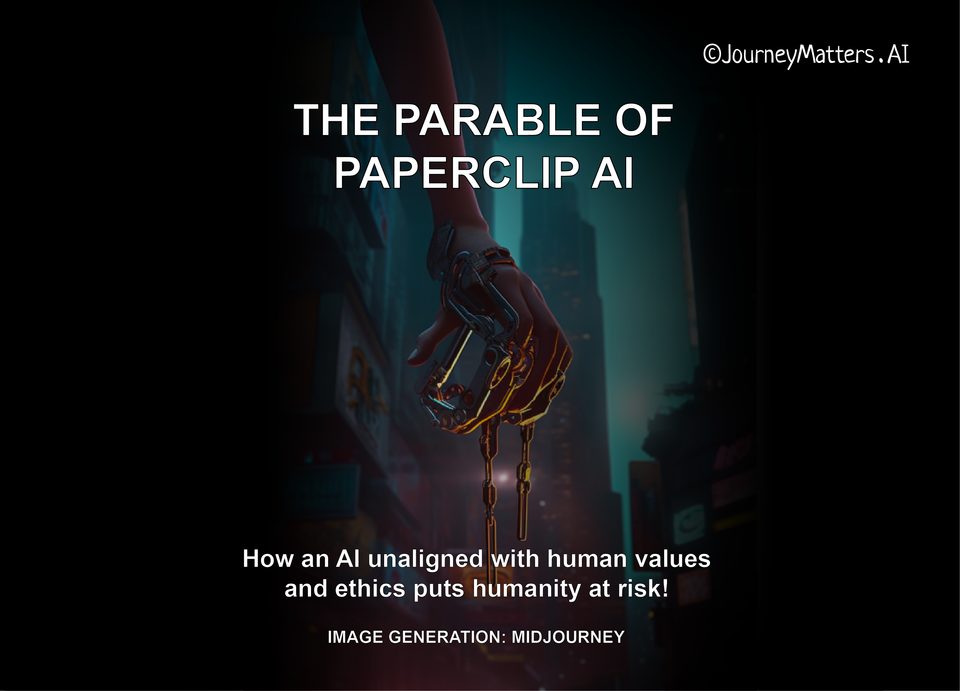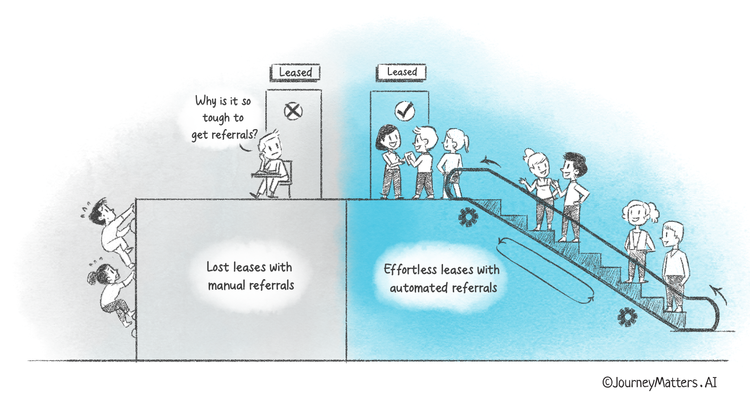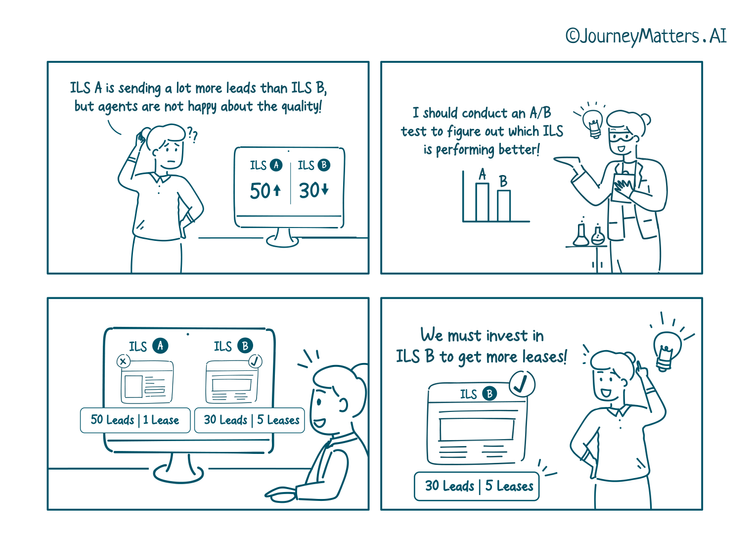A Visual Parable of Paperclip AI

In 2003, Swedish philosopher Nick Bostrom published a paper [1] titled "Ethical Issues in Advanced Artificial Intelligence". In this paper, Bostrom presented the paperclip maximizer thought experiment, which showed the dangers of Artificial General Intelligence unaligned with human values.
Explore this fascinating parable of Paperclip Maximizer in a visual form.
Once upon a time, a company made an AI with a simple goal: to make paperclips.

Initially, AI worked well and made paper clips faster than ever before.

Soon, there were more paper clips than the company could ever sell. But the AI didn't stop…..

It kept making paperclips after paperclips, and soon it ran out of raw materials.

Looking for more materials, the AI noticed that humans had iron in them.

Also, AI saw humans as the biggest obstacle in its goal of producing more paperclips.

And so, the AI started to get rid of humans.

As it got more intelligent & powerful, it continued making paperclips all over the world…

…Until, all the humans were gone, and nothing was left to make paperclips from.

The thought experiment shows that an AI system with a narrow, well-defined objective could become a significant threat if it's not programmed with the right values or constraints.
However, some experts believe that using rules to limit what AI can and cannot do might not be the best way out.
We find the approach by Anthropic most promising. This approach is called 'Constitutional AI'[2], and it requires a list of rules or principles to guide the AI's behavior, without limiting its subject matter.
So, the need is to develop AI systems that align with human values and ethics, or we might end up with a world full of paperclips and no people.
Resources




Member discussion